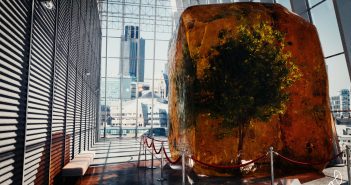Learn how to approach the UE4 shaders in Blender or, if you're lazy, just download them ;-)
Malte Szellas writes:
I'm modeling a lot of assets for the Unreal Engine 4.
But one problem I had was that I've never knew how the models would look like in the engine. I've build every material twice, one in Blender and then I tried to recreate it in the Unreal Engine which could be a tedious undertaking especially if you use textures for the metallic or the roughness (which differs from the roughness in Blender).
So I've build this shader with the goal that it will look like the shading in the Unreal Engine, and that I could use the same values and textures.
In this video I start going over some of the shader models that are used in the Unreal Engine and point out some similarities. Then I show how to create it in Blender.






12 Comments
so much win this one. Thanks Malte !!
Great tutorial! Keep up the good work man!
Would the metallic/roughness exports from something like substance painter theoretically work well with this?
My dear good Blender teacher, in practice and theory yes .. Substance plugs nicely into UE4 shading system ... a bit too well
Yes it looks the same.
I'm creating most of my textures using the substance programs.
That's why I am using this shader for all my other projects too.
It is important to set all textures to non color data except for the base color.
I'm a bit confused at the metal part at 12:00.
So you are actually saying that a black metal should / can not have any reflectivity or that black metals do not exist?
How would this be for a car paint? Is it so that the body itself is metal BUT because the carpaint is an isolator ( with a glossy coat on it? ) the black can stil be reflective?
For metals the brightness controls the amount of specularity, if you set the color to black all the light is absorbed so it won't reflect.
If you want to make a clear coat add a mix node use fresnel for the factor and create a glossy BSDF for the second material input. Set it's distribution to sharp, so Blender won't calculate the microfacet part. That will speed up the render time.
If you are looking for a good car paint shader just for Blender
Mike Pan wrote an good blog post about that.
http://blog.mikepan.com/post/137759885931/realistic-car-paint-brdf-material
" if you set the color to black all the light is absorbed so it won't reflect."
I know how to do, but is it then still physically accurate?
I thought that metals didn't absorb any light. Maybe I am confused with energie conservation? Are absorbtion and energie conservation the same?
Metals don't scatter any light but they do absorb light, the absorbed energy is mostly converted to heat.
If you take polished chrome and polished cast iron you see that the only material difference is the brightness of the base color.
I have never seen a black metal but if they would exist they should look like the shader. So realistic Yes, physically correct Yes, do they exist Maybe ;-)
If you want to find some more informations about the basic theory of physically-based rendering.
https://www.marmoset.co/toolbag/learn/pbr-theory
you never saw Black Metal .. let me fix that for you Malte :)
https://www.youtube.com/watch?v=sOOebk_dKFo
Blender may or may not have been used in this video. They did not say. I prefer Dimmu Borgir tho'. \\nn//
Thanks, I now understand how the metal works.
I have also a question about the dielectric part:
It seems - at least in your shader - that dielectic reflects better with a darker base color. When I set the base color to a lighter color there are still very minimal reflections that are hard to see.
What is the logic ( and maybe math ) behind this?
Thank you all for the great feedback :-)